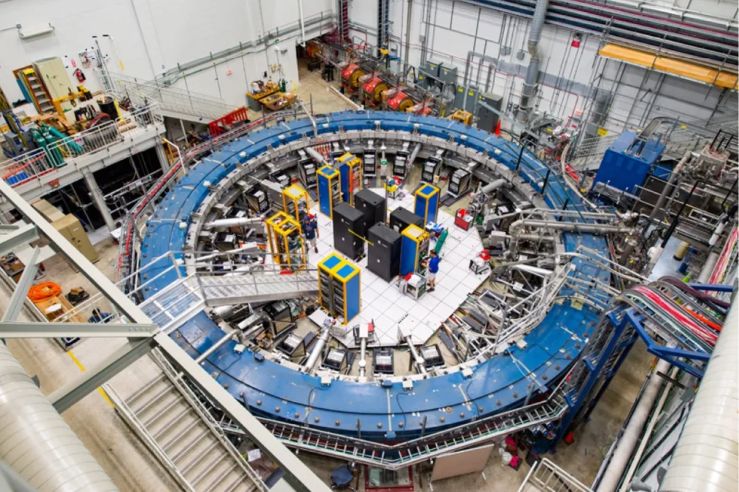On latest results of Muon g-2 experiment
World science, 19 April 2021
On 8 April 2021, Moskovsky Komsomolets published an article in which Nikolay Khomutov, a DLNP JINR researcher, spoke about the latest results of the Muon g-2 experiment.
The world is on the verge of discovering new physics. A group of several hundreds of researchers in the USA in the Fermi Laboratory (Fermilab), which includes Russian scientists from the Joint Institute for Nuclear Research (JINR), obtained data that will possibly help take a new look at our Universe. One of the six Russian co-authors, a JINR staff member Nikolay Khomutov told us what had happened in the laboratory on the outskirts of Chicago.
At a special seminar that was held on the occasion of obtaining the data, scientists announced that the results of muon experiments (indivisible elementary particles) provide significant confirmation of the existence of hitherto unknown subatomic particle or a new force. Head of the study Chris Polli even compared them to unknown monsters (ancient navigators used this image to indicate places where no one had ever been).
So, what did prompt scientists to think about the existence of a new force?
Modern physics that describes the microworld base everything on the so-called Standard Model, which can be reduced to four fundamental categories of interactions (or forces): electromagnetic, strong, weak, and gravitational. However, the international team of physicists during the Muon g-2 experiment, which is being carried out in the laboratory near Chicago, has possibly found out a new, the “fifth force” of nature.
Scientists in the XX century paid attention that there were certain forces the impact of which on muons did not fit to the Standard Model (SM). In 2006, in Brookhaven (USA), an experiment was held in the frames of which scientists measured the so-called muon’s anomalous magnetic moment with high accuracy. This physical quantity related to the rotation of a charged particle is very sensitive to all fundamental interactions.
“According to one of the most accurate experiments conducted 15 years ago, the discrepancy of the muon anomalous magnetic moment and the predictions of the Standard Model turned out to be about 3.7 sigma,” Nikolay Khomutov explains. “Now, in 2021, after the first results of the new experiment in Fermilab, we got an even greater discrepancy with the Standard Model (now it is 4.2 sigma). However, this is still not enough to declare the “new physics”. So, additional research is necessary to confirm that our muons are affected by some other interaction. Not a single theoretician can say what this interaction is. If the discrepancy with the SM reaches 5 sigma, a large-scale discovery will be most likely announced. Now we can say that we are on its verge.”
Due to the fact that any interaction is carried by particles, scientists, in this case, predict a possible discovery of completely new elementary particles that will allow scientists to update the existing Standard Model.
 The facility of the Muon g-2 experiment on the outskirts of Chicago is the main place to search for the New Physics effects. Reidar Hahn / Fermilab
The facility of the Muon g-2 experiment on the outskirts of Chicago is the main place to search for the New Physics effects. Reidar Hahn / Fermilab
An article about the obtained Muon g-2 results by a famous science popularizer Igor Ivanov for the Meduza internet portal is no less interesting. Here is a quote:
“A day before the announcement of the result of the Muon g−2 experiment in the Nature journal (a rare case for such a complex topic!), an article by a theoretical team was published, which presented the results of a new calculation of the contribution of virtual hadrons to the muon anomalous magnetic moment.
However, the authors of the new article claim that they have managed to calculate the contribution of hadrons to the anomalous deviations of the magnetic moment with record accuracy for this method. Their result drastically differs from the consensus theoretical value of 2020 and is much closer to the Muon g-2 experiment. If we believe the calculation, there is no significant discrepancy between the theory and the experiment at all.”